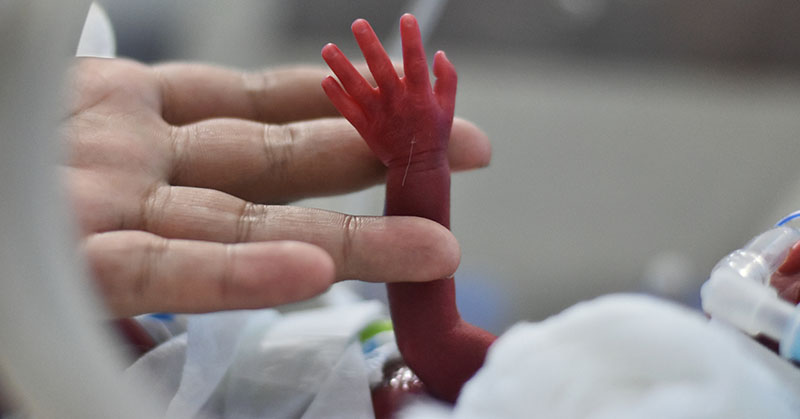
The risk for necrotizing enterocolitis (NEC)—a life-threatening intestinal condition—does not appear to be any higher among preterm infants 72 hours after a blood transfusion, suggests a study funded by the National Institutes of Health. The analysis helps allay concerns raised by earlier studies that transfusions, often essential for preterm infant survival, could raise the risk of NEC.
The study was conducted by Ariel A. Salas, M.D., M.S.P.H., of the University of Alabama at Birmingham, and colleagues in the Eunice Kennedy Shriver National Institute of Child Health and Human Development (NICHD) Neonatal Research Network. It appears in JAMA Network Open. In addition to NICHD, NIH’s National Heart, Lung, and Blood Institute and National Center for Advancing Translational Sciences provided funding for the study.
Background
NEC occurs when the tissue lining the intestinal tract becomes inflamed and dies. The condition typically affects preterm infants and usually begins within the first two or three weeks after birth.
Earlier studies have linked red blood cell transfusions in preterm infants with a higher risk of NEC. However, previous randomized clinical trials found no association between transfusions of red blood cells and NEC.
Results
For the current study, researchers sought to determine whether the risk of NEC increased shortly after transfusion. They analyzed data from a previous study of extremely low birthweight infants—those weighing less than 1,000 grams (slightly more than 2 pounds). In the previous study, researchers compared transfusing a higher threshold of red cells to a lower red cell threshold. The number of transfusions varied according to each infant’s needs, and some received multiple transfusions. The investigators found no difference in survival or reduction in neurological impairment between the high and low threshold groups.
For their current analysis, the team compared the number of NEC cases that occurred during two periods of time. The “hazard period” was 72 hours after transfusion, and the “control period” occurred between transfusions. The analysis encompassed data from 10 days after birth to either 60 days after birth or until an infant developed NEC or died.
A total of 1,690 infants were included in the analysis. Of 4,947 hazard periods and 5,813 control periods, researchers identified 133 NEC cases. Fifty-nine (44.4%) occurred during hazard periods and 74
(55.6%) occurred during control periods. The risk of NEC was 11.9 per 1,000 hazard periods and 12.7 per 1,000 control periods, a difference that was not statistically significant. However, from days 20 to 29, the infants who received the lower volume of red cell transfusions had the highest incidence of NEC—3.2 per 1,000 days.
Significance
The authors concluded that among extremely low birthweight infants, transfusions were not associated with a higher risk of NEC during hazard periods.
Next Steps
Because the incidence of NEC was higher among infants in the lower threshold group from days 20 to 29, the authors called for a larger study to investigate NEC risk in this group.
Reference
Salas, A, et al. Timing of red blood cell transfusions and occurrence of necrotizing enterocolitis: a secondary analysis of a randomized clinical trial. JAMA Network Open. 2024.

 BACK TO TOP
BACK TO TOP